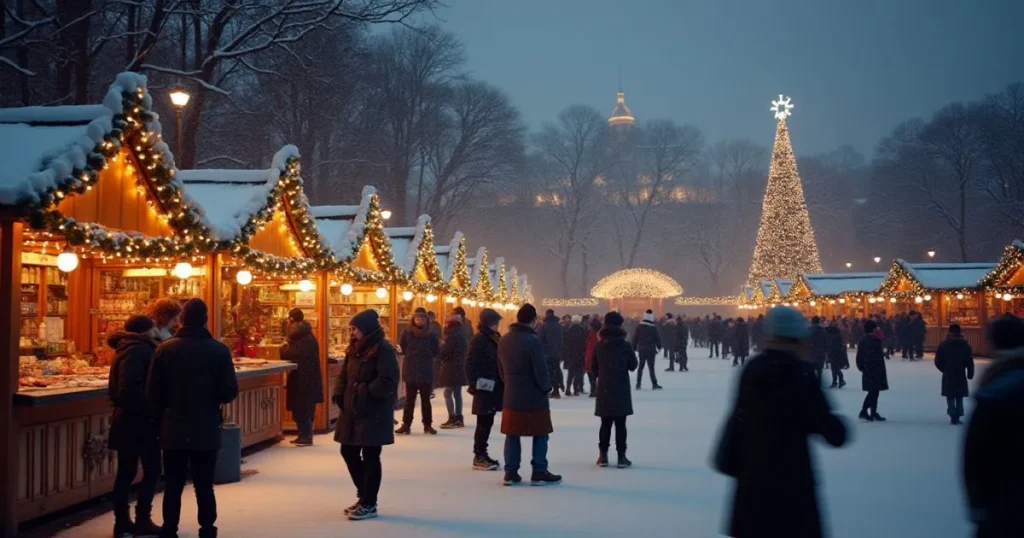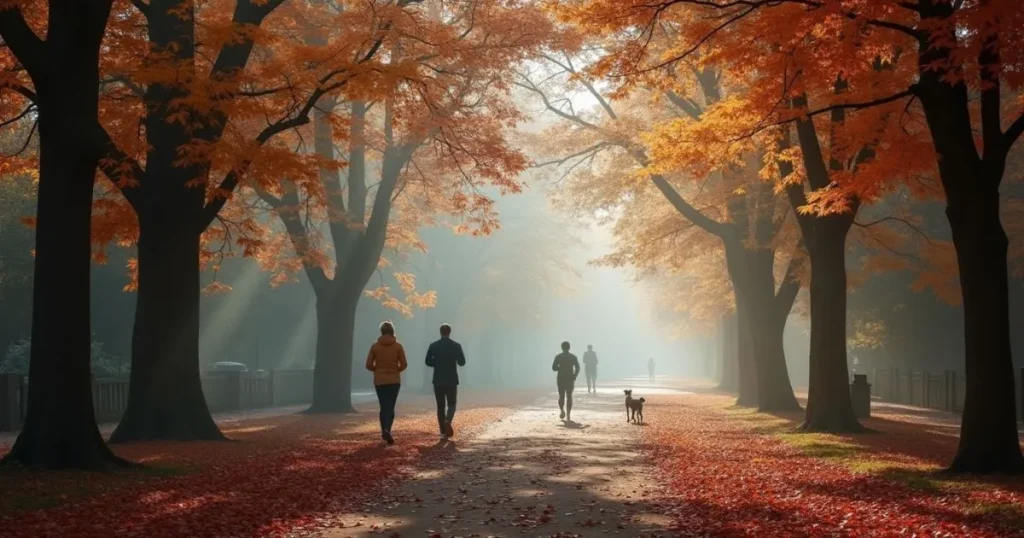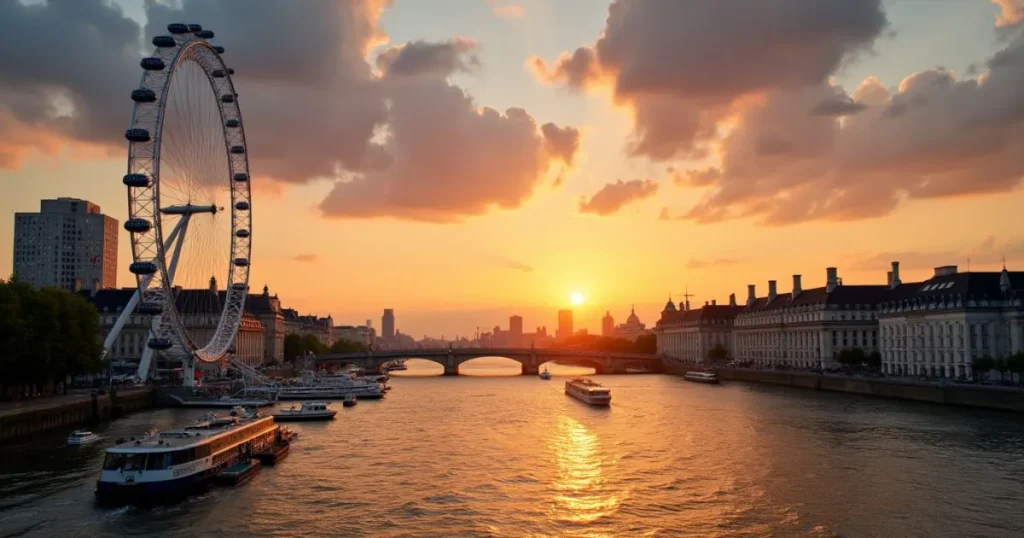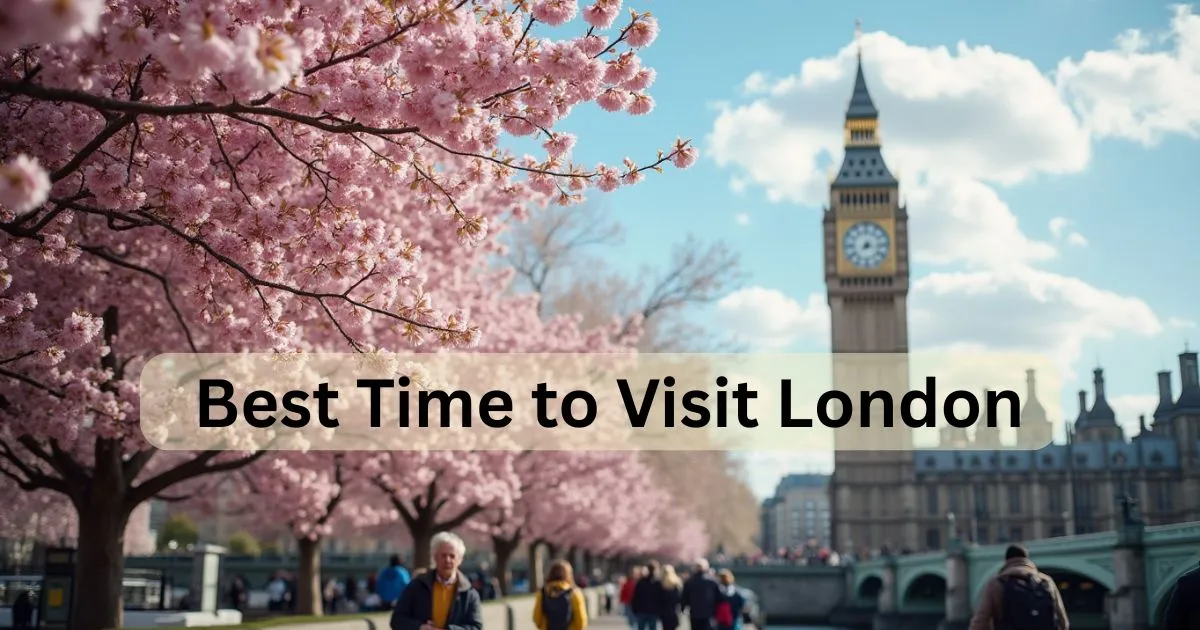Introduction
Did you know that despite London’s rainy reputation, it actually receives less annual rainfall than Rome, Barcelona, and even Miami? With 31 million visitors in 2019, London remains one of the world’s most sought-after destinations, regardless of when you choose to visit. But timing your trip to the UK’s vibrant capital can dramatically impact your experience, budget, and the attractions you’ll enjoy. Finding the best time to visit London depends on your priorities: Are you seeking pleasant weather, fewer crowds, cultural events, or budget-friendly options? This comprehensive guide explores London through the seasons, helping you discover the perfect time for your unforgettable London adventure.
London travel seasons offer something unique year-round, from festive winter charm to vibrant summer street festivals. Navigating London tourist crowds is easier during the shoulder seasons, when lines are shorter and popular spots less packed.
Table of Contents
Top Attractions
London’s iconic landmarks and diverse attractions offer something for every traveler, regardless of when you visit. However, knowing the best time to visit London can significantly enhance your experience at these must-see destinations:
Buckingham Palace – The official residence of the British monarch opens its State Rooms to visitors during the Royal Collection Trust’s summer opening (typically late July to early October). This is the only time visitors can explore the palace’s magnificent interior, making summer an ideal time for royal enthusiasts.
Tower of London – This historic castle houses the Crown Jewels and offers fascinating Yeoman Warder tours. While open year-round, visit during weekday mornings in spring or fall to avoid the summer tourist crush while still enjoying relatively pleasant weather.
British Museum – With over 8 million artifacts spanning human history, this world-renowned museum provides a perfect indoor activity during London’s frequent rain showers. Visit during weekday afternoons for a more peaceful experience away from school groups.
The London Eye – For breathtaking city views, ride this iconic wheel during clear days in spring or early summer. Sunset rides offer spectacular vistas, but book in advance during peak seasons to avoid long queues.
Hyde Park – London’s magnificent central park transforms with the seasons: spring brings blooming flowers, summer offers rowing on the Serpentine, autumn displays vibrant foliage, and winter features the magical Winter Wonderland festival.
The best time to visit London truly depends on your travel goals—whether it’s sightseeing, shopping, or soaking up the seasonal vibes.
Insider Tip: Purchase a London Pass if visiting multiple attractions, and consider booking timed entry tickets even for free museums during peak season (June-August) to avoid disappointment. One of the most practical London travel tips is to buy an Oyster card to save on public transport across the city.
One of the most frequently asked travel questions is, “When is the best time to visit London?”
Best Time to Visit

Determining the best time to visit London ultimately depends on your priorities, but understanding the city’s seasonal patterns will help you make an informed decision:
Understanding London weather by month helps travelers pack smart and plan activities suited to each season’s conditions.
Spring (March-May): As London awakens from winter, temperatures range from 9-17°C (48-63°F). April and May bring blooming gardens in Regent’s Park and Kew Gardens, making this an ideal time for nature lovers. The Chelsea Flower Show in late May is a horticultural highlight. Spring offers a sweet spot of moderate tourist numbers and increasingly pleasant weather, though be prepared for rain showers.
Summer (June-August): Peak tourist season brings warmer temperatures averaging 14-23°C (57-73°F) and longer daylight hours (up to 16+ hours in June). This period hosts major events including Wimbledon Tennis Championships, the BBC Proms, and Notting Hill Carnival. While offering the most reliable weather and vibrant atmosphere, summer also brings higher prices and larger crowds.
Autumn/Fall (September-November): As tourist numbers decrease, temperatures range from 8-19°C (46-66°F). This shoulder season offers spectacular foliage in London’s many parks, the London Film Festival, and sales events beginning in November. Accommodation prices drop after summer, making autumn an excellent value proposition.
Winter (December-February): London’s coldest season (temperatures typically 2-9°C/36-48°F) offers magical Christmas markets, festive decorations, and January sales. While daylight is limited (around 8 hours) and some attractions have reduced hours, winter brings lower hotel rates and the opportunity to experience London’s cozy pub culture and world-class theater scene without summer crowds.
Data-Backed Recommendation: According to tourism statistics and weather patterns, late May to early June and September offer the best overall combination of pleasant weather, reasonable crowds, and good value. For budget travelers, January and February (excluding Valentine’s Day weekend) provide the lowest accommodation rates while still offering a quintessential London experience.
Wondering about the best time to visit London for fewer crowds and lower prices? Consider traveling during the shoulder seasons. Many locals say May is the best month to visit London thanks to its mild weather, blooming parks, and lighter tourist footfall.
Itinerary Suggestions
3-Day London Itinerary (Ideal for Spring or Fall)
Day 1: Historic London
- Morning: Begin at the Tower of London (arrive for opening to see the Crown Jewels without crowds), then walk across iconic Tower Bridge
- Afternoon: Explore the British Museum’s highlights (free entry!)
- Evening: Enjoy pre-theater dinner in Covent Garden followed by a West End show
Day 2: Royal London
- Morning: Witness Changing the Guard at Buckingham Palace (11am on selected days)
- Afternoon: Stroll through St. James’s Park to Westminster Abbey and the Houses of Parliament
- Evening: Take a sunset cruise on the Thames for magical views of London’s illuminated skyline
Day 3: Cultural London
- Morning: Visit the Tate Modern on the South Bank
- Afternoon: Explore Borough Market for lunch, then walk along the Thames to Shakespeare’s Globe
- Evening: Ride the London Eye for panoramic city views, followed by dinner in lively Soho
Summer-Specific Activities:
- Attend an outdoor film screening at Somerset House
- Enjoy a traditional afternoon tea in a garden setting
- Experience open-air theater at Regent’s Park Open Air Theatre
Winter-Specific Activities:
- Ice skating at Somerset House or the Natural History Museum
- Exploring the enchanting Winter Wonderland in Hyde Park
- Warming up with Sunday roast in a historic pub
Personalized Tip: If visiting during the best time to visit London in terms of weather (late spring/early summer), build flexibility into your itinerary for spontaneous park picnics or outdoor explorations when the sun makes an appearance.
January and February are often considered the cheapest time to visit London, with significantly lower accommodation and flight prices.
Many travelers agree that spring is the best time to visit London, thanks to the blooming gardens and milder weather.
Local Culture & Tips
Understanding London’s distinct cultural nuances will enhance your visit regardless of when you travel:
Transportation Etiquette: Stand on the right side of escalators in the Underground (locals call it “the Tube”). During rush hours (roughly 8-9:30am and 5-6:30pm), avoid the Tube if possible, especially during summer when it can be uncomfortably warm.
British Pub Culture: Pubs are community gathering places, not just drinking establishments. Order and pay at the bar (table service is rare), and experience the traditional Sunday roast—a quintessential British institution best enjoyed in winter months.
Tipping Practices: Tipping 10-15% is standard in restaurants (check if service charge is already included). Tipping is not expected in pubs when ordering at the bar, though appreciated for table service.
Weather Adaptability: Londoners have mastered the art of weather resilience. Follow their lead by carrying a compact umbrella year-round and dressing in layers. The local saying “If you don’t like the weather, wait 15 minutes” holds true regardless of when you visit.
Neighborhood Diversity: Each London neighborhood offers distinct character—from posh Kensington to eclectic Camden, multicultural Brixton to trendy Shoreditch. The best time to visit London’s diverse neighborhoods varies: Summer is perfect for Notting Hill and Primrose Hill’s outdoor cafés, while winter showcases the cozy charm of Hampstead and Greenwich.
Cultural Insight: Brits often use understatement and indirect communication. “Not bad” is often high praise, and politeness is highly valued—expect to hear “sorry” frequently, even when someone else bumps into a Londoner!
If you’re planning a trip and asking yourself when’s the best time to visit London, this guide will help you decide.

A perfect London itinerary spring might include strolling through Kew Gardens, a boat ride on the Thames, and a theater night in the West End.
Common Mistakes to Avoid
Even seasoned travelers can fall into these London travel pitfalls:
Only Visiting Central London: While Westminster and the West End offer iconic attractions, venturing to neighborhoods like Islington, Hackney, or Richmond provides authentic London experiences away from tourist crowds. This is especially valuable during peak summer months.
Underestimating Transit Times: London is vast, and traveling between attractions often takes longer than expected. Build buffer time into your itinerary, particularly during morning and evening rush hours or when using the Tube during summer heat.
Missing Free Museums: Many of London’s world-class museums offer free entry to permanent collections. The British Museum, National Gallery, Tate Modern, Natural History Museum, and Victoria & Albert Museum won’t cost you a penny—perfect for rainy days in any season.
Over-Planning: London rewards spontaneity. While planning is essential, leave room to follow interesting side streets or pop into an inviting café. This flexibility is especially important during winter when weather may alter outdoor plans.
Ignoring Advance Bookings: During peak times (especially summer), popular attractions like the London Eye, Tower of London, and Buckingham Palace State Rooms can sell out. Book time-specific tickets in advance to avoid disappointment.
Weather Misconceptions: Many visitors avoid London in winter assuming constant rain, yet data shows February is typically London’s driest month! Conversely, August—often assumed to be ideal—can experience sudden downpours despite warmer temperatures.
The best time to visit London varies depending on what you want to experience, from festive winter markets to summer music festivals.
Budget & Costs
Understanding London’s cost patterns can help determine the best time to visit London for your budget:
Seasonal Price Variations:
- Peak Season (June-August): Hotel rates increase by 25-40% compared to low season, with average mid-range accommodations costing £150-250 per night
- Shoulder Seasons (April-May, September-October): Rates typically 15-20% lower than peak summer prices
- Low Season (November-March, excluding Christmas/New Year): The most economical time with hotel rates up to 30-50% lower than summer prices
Transportation Costs:
- Oyster Card or contactless payment is essential for public transport (capped daily charges)
- Consider the 7-Day Travelcard for longer stays (£37.00 for zones 1-2)
- Avoid peak travel times (6:30-9:30am and 4-7pm weekdays) for lower fares
Dining Budget:
- Average pub meal: £12-18
- Casual restaurant: £15-25 per person (without drinks)
- Pre-theater dining deals (5-7pm): Often offer excellent value year-round
- Borough Market, Maltby Street Market, and other food markets offer delicious, affordable options
Attraction Savings:
- London Pass offers value if visiting multiple paid attractions
- Consider the 2for1 deals with National Rail tickets for significant savings
- Free museums and galleries provide world-class experiences without spending a penny
Money-Saving Tip: January sales (starting right after Christmas) offer excellent shopping value, while theaters often release discounted tickets in January-February and September, making these periods ideal for culture enthusiasts on a budget.
For photography lovers, early summer may be the best time to visit London, with longer daylight hours and clearer skies.
Packing & Preparation Tips
Knowing what to pack for London’s variable weather is crucial regardless of when you visit:
Year-Round Essentials:
- Compact umbrella and waterproof jacket (regardless of season)
- Comfortable walking shoes (London is best explored on foot)
- Adapter plug for UK outlets (3-pin, 230V)
Seasonal Additions:
Spring:
- Lightweight layers for variable temperatures
- Waterproof footwear for April showers
- Light scarf for cool evenings
Summer:
- Breathable clothing for warmer days and potential heatwaves
- Sunglasses and sunscreen (yes, even in London!)
- Light cardigan for air-conditioned museums and evening temperature drops
Autumn/Fall:
- Medium-weight jacket or coat
- Scarves and light gloves for November
- Water-resistant footwear
Winter:
- Warm coat, hat, gloves, and scarf
- Thermal or wool layers
- Waterproof boots (especially during December-January)
Travel Documentation:
- Valid passport with at least six months validity
- Proof of accommodation and return travel (may be required at immigration)
- Travel insurance details
- COVID-19 documentation as required (check for current regulations)
Tech Preparation: Download useful apps before arrival: Citymapper for navigation, OpenTable for restaurant bookings, and TodayTix for last-minute theater deals.
Locals might tell you that September offers the best time to visit London without the chaos of peak tourism.

Conclusion
The best time to visit London isn’t one-size-fits-all—it depends on your priorities, interests, and flexibility. Summer offers vibrant energy and reliable (if occasionally rainy) weather but comes with higher costs and crowds. Winter presents budget-friendly options and magical festive experiences despite shorter days. The shoulder seasons of spring and autumn often provide the perfect balance of reasonable weather, lower crowds, and good value.
Timing your trip during the best time to visit London can significantly enhance your experience and help you save money.
London’s enduring appeal lies in its ability to offer remarkable experiences year-round. Whether you’re exploring world-class museums during January rain showers, picnicking in royal parks during May sunshine, experiencing summer festivals, or enjoying cozy pubs during December evenings, London always reveals new facets to discover.
The best time to visit London if you love cultural events would be during the BBC Proms or the Notting Hill Carnival.
When planning your visit, consider what matters most—weather, budget, specific events, or avoiding crowds—and use this guide to choose your perfect London moment. Whenever you decide to visit, London’s timeless charm, rich history, and vibrant contemporary culture promise an unforgettable experience in one of the world’s greatest cities.
Choosing the best time to visit London is crucial for maximizing your itinerary and minimizing your budget.
Ready to start planning your London adventure? Share your plans in the comments, or explore our guides to London’s neighborhoods, day trips from London, or budget travel tips for more inspiration!
Families often find that the school holidays aren’t necessarily the best time to visit London, due to higher costs and longer queues.
FAQs
What is truly the best time to visit London for good weather?
Late May to early September offers the warmest and sunniest conditions, with average temperatures between 15-23°C (59-73°F) and longer daylight hours. June statistically receives the most sunshine hours, though weather remains unpredictable year-round.
When can I find the cheapest flights to London?
January and February (excluding Valentine’s Day) typically offer the lowest airfares, followed by November (pre-holiday season). Book 3-4 months in advance for optimal prices, and consider mid-week flights for additional savings.
Is London too crowded during summer to enjoy?
While summer brings larger crowds, particularly at major attractions, London’s vast size means you can always find less touristed areas. Visit popular sites early in the morning, explore neighborhoods like Hampstead or Greenwich, and book timed entry tickets to manage the summer influx.
Are London’s Christmas markets worth visiting in December?
Absolutely. From mid-November through December, London transforms with festive markets, particularly at Southbank Centre, Leicester Square, and Winter Wonderland in Hyde Park. While accommodation prices rise for this period, the magical atmosphere offers a uniquely enchanting London experience.
What’s the rainiest month in London?
October and November typically receive the most rainfall, though the perception of London as constantly rainy is somewhat misleading—the city receives less annual precipitation than Rome, Miami, or Sydney. Rain tends to fall as light drizzle rather than heavy downpours, so most activities continue with minimal disruption.
Is it worth visiting London in January and February?
These months offer excellent value with hotel rates up to 50% lower than peak season, January sales for shopping enthusiasts, and smaller crowds at major attractions. While days are shorter and temperatures cooler (averaging 4-9°C/39-48°F), London’s wealth of indoor activities and cozy pub culture create a distinctly atmospheric winter experience.


Thanks for reading my guide on the best time to visit London! I’d love to hear about your travel experiences, have you been to London during a specific season that stood out? Or are you planning a trip and still deciding when to go? Drop your thoughts, questions, or tips below! I’m happy to help fellow travelers plan their perfect London adventure!